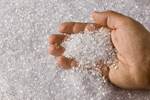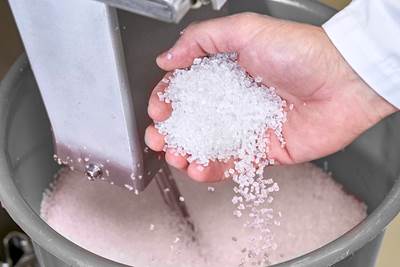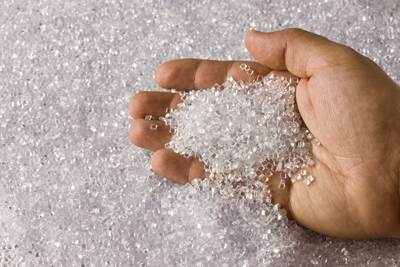Prices of PE, PP, PVC Up; PS, PET Flat
While prices moved up for three of the five commodity resins, there was potential for a flat trajectory for the rest of the third quarter.

Prices of PE, PP and PVC moved up in July, while those of PS and PET rolled over, but there was potential for flat pricing for all through August and September. Driving factors include reduced domestic demand. The slackened demand can be partially attributed to prebuying in anticipation of a very active 2024 hurricane season; a drop in exports due to higher domestic prices combined with global competitive pricing and slowed demand; and overall lower raw material costs, except for propylene monomer, though a change in that market was underway. All this holds, barring major production disruptions, of course.
These are the views of purchasing consultants from Resin Technology Inc. (RTi); senior analysts from Houston-based PetroChemWire (PCW); CEO Michael Greenberg of The Plastics Exchange (TPE); Scott Newell, executive vice president polyolefins at distributor/compounder Spartan Polymers; and Mike Burns of Plastic Resin Market Advisors.
These sources all noted that despite Hurricane Beryl in July, which had a negligible impact on resin production, partially due to a large Saharan dust plume which prevented the development of new storms. That said, most meteorologists continued to predict a heating up of the summer storm season that could prove severe. As TPE’s Greenberg reported, “A series of storms, or even just a major one, could disrupt petrochemical and plastics production to create supply challenges, so we advise to err to the side of caution and keep an extra inventory buffer on hand, just in case.”

PE Prices Up
Polyethylene prices, after rolling over for both May and June, appeared to be moving up 3¢/lb in July, this out of the 5¢/lb July-issued hike, with one industry index showing as much and another indicating ‘unsettled.’ Meanwhile, PE suppliers were out with another 5¢/lb increase for August. By most accounts, while it seems PE resin prices won’t drop within the July-August time frame, it appears that PE suppliers won’t garner much more than the 3¢/lb increase out of the 10¢/lb sought. This according to PCW’s associate director for PE, PP and PS David Barry; TPE’s Greenberg; Burns of Plastic Resin Market Advisors; and Kevin Mekaru, RTi’s senior business leader commodity plastics.

These sources generally were in agreement that any PE price reduction would not be forthcoming for August and September, and that a flat pricing scenario had potential. Some, like Barry and Burns, ventured that the partial 3¢/lb increase could be implemented in August vs. July. All noted that the impact of hurricane Beryl was not an issue and that the market was generally balanced. In fact, Barry noted that some PE resin sectors — primarily LLDPE film and HDPE injection — appeared to be “long.”
Moreover, nearly everyone commented that the overall market was not as robust as PE suppliers have been indicating, citing a slowdown in Asian exports in particular. “The long-term outlook does not foresee the sustainability of any of the new increases without an unexpected event,” Burns says. “Feedstocks will not drive prices as natural gas and ethane inventories remain ample and low cost.” Both Barry and Mekaru noted that new capacity from Shell, NOVA and Baystar was also making an impact. They also added that Shell had initiated production and marketing of HDPE blow molding grades at attractive prices, in addition to its LLDPE film and HDPE injection grade resins.
At July’s end, Greenberg reported that TPE’s prime spot PE pricing was a mixed bag, with most grades down a half cent, though lower volume LLDPE injection and granular grades held firm, and scarce LDPE injection garnered a penny increase. “Export business was softer due to competitive offers out of China,” Greenberg says. “North American producers might need to be agile with export pricing to remain competitive on incremental sales and maintain market share and/or reduce reactor rates to keep burdensome inventories from developing.”

PP Prices Up
Polypropylene prices in July moved up 5¢/lb in step with propylene monomer, and while suppliers were out with a 3¢/lb price increase in addition to any change in the monomer, this initiative fell by the wayside, according to PCW’s Barry; Spartan Polymers’ Newell; TPE’s Greenberg; and Paul Pavlov, vice president of PP and PVC for RTi. The continuation of a tight monomer supply due to planned and unplanned shutdowns of on-purpose PDH (propane dehydrogenation) propylene plants, made the outlook for pricing in August uncertain, though nearly all sources saw potential for flat pricing in September.
Barry noted that spot propylene prices going into August were trending down. He also reported on a slowdown in exports demand due to higher U.S. prices. Still Mekaru ventured an increase of another 3¢/lb was possible for propylene and PP in August. “We’re still vulnerable,” Newell says. “There’s not a lot of cushion in terms of propylene supply, but PDH plants are coming back online, so it’s a tough call.” Citing American Chemistry Council data, these sources all note that domestic PP demand through the second quarter was up by 5% year-to-date, but all also note that it’s difficult to determine how much of that was due to prebuying. Newell notes that some processors had bought material to last through September. By July’s end, some resin distributors reported a slowdown, attributing it to higher prices, according to Barry.
Reporting on spot PP market sales, Greenberg reports that TPE saw the market as “a tale of two grades” in the last week of July. He notes that homopolymer PP sales slumped due to prebuying during May and June, while PP copolymer sales moved up as supply had been tight for several months and was further exacerbated by an INEOS Polyolefins force majeure for its PP copolymer resins. “Invista is not expected to bring its CoPP line back up until at least mid-August, and Heartland Polymers is not expected to produce CoPP until late fourth quarter,” Greenberg says.

PS Prices Flat
Polystyrene prices in July appeared to have rolled over for the fourth consecutive month, and there was some potential for this trend to continue into August and September, according to PCW’s Barry and RTi’s Mekaru. This despite unplanned shutdowns in July due to tornado turbulence in Illinois at two plants — one by INEOS Styrolution and the other by American Styrenics.
Barry, for one, notes that these two plants represented only a fraction of overall domestic PS production, but Pavlov says it was a bit premature to determine that degree of impact, also noting that the shutdowns affected primarily HIPS production. As such, he ventures prices in August could move up with September likely to be flat. Somewhat in contrast, Barry reports that spot feedstock prices — primarily benzene — were dropping, noting that July benzene prices fell 13-14¢/gal to $3.85. He ventures that another similar drop was likely for August, so that a corresponding drop in PS prices was likely, at least, for August. While PS demand is characterized as a bit better in second quarter year to date, it was still lackluster, with plant’s operating at 60% utilization.

PVC Prices Up
PVC prices in July moved up 1¢/lb following the unusual back-to-back increases through April, which now total 7¢/lb. While some suppliers had issued a total of 4¢/lb for the July-August time frame, the trajectory was changing, according to RTi’s Pavlov and as indicated by Donna Todd, PCW’s associate director PVC and pipe.
Pavlov ventures that August prices would roll over and September prices had the potential for a 1¢/lb decrease. Todd reports that while OxyVinyls had joined Westlake to issue increases of 2¢/lb each for July and August, there had been no announcements from either Formosa or Shintech. That’s despite some unplanned shutdowns of PVC and VCM lines. Pavlov notes that PVC demand for the first half of 2024 was up by nearly 11%, adding that domestic suppliers continued to have an advantage in exports due to global PVC prices rising.

PET Prices Flat
PET prices were flat again in July, following the 1¢/lb-to-1.5¢/lb drop in May. They had the potential to stay relatively flat in August and September, according to RTi’s Mekaru. This is in concert with raw material formulation costs and general economic indications. Mekaru continues to characterize PET supply as ample, with competitively priced imports continuing to be a factor and year-over-year demand showing a bit of an uptick, which has included prebuying activity in anticipation of the hurricane season.
Related Content
Polyethylene Fundamentals – Part 4: Failed HDPE Case Study
Injection molders of small fuel tanks learned the hard way that a very small difference in density — 0.6% — could make a large difference in PE stress-crack resistance.
Read MorePrices for PE, PS, PVC, PET Trending Flat; PP to Drop
Despite price increase nominations going into second quarter, it appeared there was potential for generally flat pricing with the exception of a major downward correction for PP.
Read MoreFundamentals of Polyethylene – Part 6: PE Performance
Don’t assume you know everything there is to know about PE because it’s been around so long. Here is yet another example of how the performance of PE is influenced by molecular weight and density.
Read MorePrices of PE, PP, PS, PVC Drop
Generally, a bottoming-out appears to be the projected pricing trajectory.
Read MoreRead Next
Prices Up for All Volume Resins
First quarter was ending up with upward pricing, primarily due to higher feedstock costs and not supply/demand fundamentals.
Read MorePrices of All Five Commodity Plastics On the Way Up
Despite earlier anticipated rollover in prices for most of the volume commodity resins, prices were generally on the way up for all going into the third month of first quarter.
Read MorePrices of PE, PP, PVC, PET Largely Firm, Flat for PS
By most measures, pricing for the five commodity resins appeared to be holding firm going into the third quarter.
Read More















